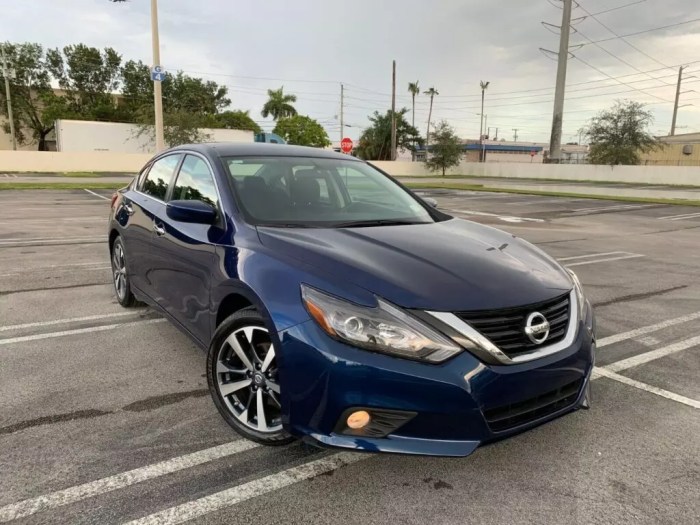
Navigating the world of insurance can feel like deciphering a complex code. However, understanding the potential benefits of bundling your auto and renters insurance can significantly simplify the process and potentially save you money. This guide delves into the intricacies of bundled insurance policies, exploring the advantages, disadvantages, and considerations involved in choosing the right package for your specific needs.
We’ll examine how bundling your auto and renters insurance can lead to cost savings, detailing the factors influencing price and comparing the value proposition against purchasing separate policies. We’ll also explore coverage details, limitations, and provide a step-by-step guide to help you find the perfect bundle tailored to your individual circumstances. Real-world scenarios will illustrate the decision-making process, highlighting the key factors to consider.
Cost Savings and Value

Bundling your auto and renters insurance can offer significant financial advantages. By combining your policies with a single insurer, you often unlock discounts that wouldn’t be available if you purchased each policy separately. This translates to lower monthly premiums and more money in your pocket. This section will explore the cost savings and overall value proposition of bundled insurance policies.
Bundled insurance policies frequently result in lower overall costs compared to purchasing separate policies. Insurers often offer discounts for bundling, recognizing the reduced administrative overhead and increased customer loyalty associated with multi-policy customers. These discounts can vary significantly depending on several key factors.
Factors Influencing Bundled Insurance Prices
Several factors contribute to the final price of a bundled insurance policy. Understanding these factors can help you make informed decisions and potentially secure more favorable rates.
Location significantly impacts insurance premiums. Areas with higher crime rates, more frequent accidents, or higher property values tend to have higher insurance costs. Similarly, your credit score can influence your premiums; insurers often view a good credit score as an indicator of responsible financial behavior, potentially leading to lower rates. Finally, the level of coverage you choose directly impacts your premium. Comprehensive coverage, while offering greater protection, will naturally cost more than a basic liability-only policy.
Comparison of Bundled vs. Separate Policies
The following table illustrates potential cost differences between purchasing bundled and separate auto and renters insurance policies for various scenarios. These are illustrative examples and actual costs will vary depending on the specific insurer, location, and individual circumstances. It’s crucial to obtain personalized quotes from multiple insurers to compare prices accurately.
| Scenario | Separate Policies (Estimated Annual Cost) | Bundled Policy (Estimated Annual Cost) | Savings (Estimated Annual) |
|---|---|---|---|
| Low-Risk Driver, Basic Coverage | $1200 (Auto) + $300 (Renters) = $1500 | $1350 | $150 |
| High-Risk Driver, Comprehensive Coverage | $2500 (Auto) + $600 (Renters) = $3100 | $2700 | $400 |
| Average Risk Driver, Standard Coverage | $1800 (Auto) + $450 (Renters) = $2250 | $1950 | $300 |
Note: These figures are estimations and may not reflect actual costs. It is essential to obtain quotes from multiple insurance providers to determine the best rates for your specific needs.
Coverage Details and Limitations
Bundled auto and renters insurance policies offer convenience and potential cost savings, but understanding the specific coverages and limitations is crucial before committing. This section details what’s typically included and where potential gaps in protection might exist.
It’s important to remember that the specifics of your coverage will depend on the insurer and the chosen policy. Always carefully review your policy documents to understand exactly what is and isn’t covered.
Typical Auto Insurance Coverage in Bundled Policies
Bundled auto insurance typically includes liability coverage (protecting you financially if you cause an accident), collision coverage (repairing your vehicle after an accident, regardless of fault), comprehensive coverage (covering damage from events like theft or hail), and uninsured/underinsured motorist coverage (protecting you if you’re hit by an uninsured driver). However, the limits on these coverages can vary significantly. For example, liability coverage might have a limit of $100,000 per accident, which could be insufficient in a serious accident with multiple injuries. Similarly, collision and comprehensive coverage often have deductibles, meaning you pay a certain amount out-of-pocket before the insurance kicks in.
Typical Renters Insurance Coverage in Bundled Policies
Renters insurance bundled with auto insurance generally covers personal belongings against damage or theft, liability protection if someone is injured in your apartment, and additional living expenses if your apartment becomes uninhabitable due to a covered event. Again, the specific limits and exclusions vary by policy. For instance, there might be a limit on the amount of coverage for certain items, like electronics or jewelry, or exclusions for certain types of damage, such as flood damage.
Potential Limitations and Exclusions
Many bundled policies have limitations and exclusions that consumers should be aware of. For example, flood insurance is rarely included in standard renters insurance policies, requiring a separate flood insurance policy, especially in flood-prone areas. Similarly, high-value items like collectibles or expensive jewelry might require separate endorsements or riders to ensure adequate coverage. Certain types of damage, like damage caused by wear and tear or intentional acts, are typically excluded from both auto and renters insurance. Furthermore, the liability limits in both auto and renters insurance might be too low to cover significant damages or lawsuits.
Situations Where Separate Policies Might Be Beneficial
A bundled policy might not be sufficient if you own high-value possessions, live in a high-risk area for natural disasters, or have unique insurance needs. For instance, someone with a classic car collection might need specialized auto insurance that a standard bundled policy doesn’t offer. Similarly, a homeowner with significant assets might need more comprehensive liability coverage than what’s typically included in a renters insurance policy. Someone living in an area prone to earthquakes or floods will likely require separate earthquake and flood insurance policies, as these are rarely included in standard bundled packages. Finally, individuals with high net worth may find that the liability limits offered in bundled policies are inadequate and require supplemental umbrella liability coverage.
Finding the Right Bundle
Choosing the right auto and renters insurance bundle can seem daunting, but a systematic approach simplifies the process and ensures you secure the best coverage for your needs. This involves understanding your individual circumstances and comparing different policy options effectively. By carefully considering your risk profile and asking the right questions, you can confidently select a bundle that offers optimal protection at a competitive price.
Finding the perfect auto and renters insurance bundle requires a clear understanding of your individual needs and risk profile. Factors like your driving history, the value of your belongings, and your location significantly impact the type and level of coverage you require. Ignoring these factors can lead to inadequate protection or overspending on unnecessary coverage.
Assessing Individual Needs and Risk Profiles
Before comparing bundles, it’s crucial to honestly evaluate your individual circumstances. Consider your driving record (frequency of accidents, tickets, etc.), the age and value of your vehicle, the location of your residence (crime rates, natural disaster risk), and the value of your personal possessions. A clean driving record might qualify you for lower premiums, while living in a high-risk area might necessitate higher coverage limits. For example, someone with a history of speeding tickets might find higher premiums than someone with a spotless record. Similarly, someone living in a hurricane-prone area would likely need higher coverage limits for their renters insurance than someone in a less hazardous location.
Step-by-Step Guide to Comparing Bundles
- Gather Quotes: Contact multiple insurance providers and request quotes for both auto and renters insurance separately, as well as bundled options. This allows for a direct comparison of prices and coverage.
- Compare Coverage Details: Carefully review each quote, paying close attention to coverage limits, deductibles, and exclusions. Ensure the coverage adequately protects your assets and liabilities.
- Analyze Deductibles: Higher deductibles typically result in lower premiums, but you’ll pay more out-of-pocket in case of a claim. Choose a deductible you can comfortably afford.
- Evaluate Additional Features: Consider optional add-ons like roadside assistance, rental car reimbursement, or personal liability coverage. Assess their value and whether they justify the additional cost.
- Check Customer Reviews: Research the insurance providers you’re considering. Look at customer reviews and ratings to gauge their reputation for claims handling and customer service.
- Compare Total Costs: Once you’ve considered coverage details and additional features, compare the total annual cost of each bundle to determine the most cost-effective option.
Checklist of Questions for Insurance Providers
Understanding your needs and comparing bundles effectively is only half the battle. It’s equally important to ask pertinent questions to your insurance provider to ensure you fully understand the policy terms and conditions.
- What are the specific coverage limits for my auto and renters insurance?
- What are the deductibles for each type of coverage?
- Are there any exclusions or limitations on my coverage?
- What is the claims process, and how long does it typically take to resolve a claim?
- What discounts are available (e.g., multi-policy, safe driver, etc.)?
- What is the provider’s customer service rating and complaint history?
Illustrative Scenarios

Choosing between bundled and separate insurance policies can be a complex decision, depending on individual circumstances and priorities. The following scenarios illustrate how different individuals might approach this choice, highlighting the factors influencing their decisions.
Young Professional’s Insurance Decision
Sarah, a 26-year-old marketing professional, recently moved to a new city and needs both auto and renters insurance. She’s comparing a bundled package offered by her current auto insurer with separate policies from different providers. The bundled option offers a slight discount, but the renters insurance coverage is less comprehensive than a standalone policy she found with a different company specializing in renters insurance. Sarah carefully weighs the convenience of a bundled package against the potential need for more robust renters coverage, given the value of her belongings. Ultimately, she opts for separate policies, prioritizing comprehensive renters insurance over a small discount on her auto insurance, recognizing the higher risk associated with replacing her possessions in case of theft or damage.
Family with Multiple Vehicles and Renters Insurance
The Miller family, with two adult children and three vehicles, is reviewing their insurance needs. They currently have separate auto and renters insurance policies. They explore three bundled options: Option A offers a significant discount but limits coverage on their older vehicle. Option B provides more comprehensive coverage across all vehicles and renters insurance but at a higher cost. Option C offers a mid-range discount with decent coverage, striking a balance between cost and protection. After comparing premiums, deductibles, and coverage details, the Millers choose Option C, recognizing that the extra cost of Option B isn’t justified by the marginal increase in coverage, while Option A’s limited coverage on their older vehicle presents an unacceptable risk.
Homeowner with High-Value Property
John, a homeowner with a newly constructed, high-value house, is considering bundling his auto and homeowners insurance. He’s aware that bundling often provides discounts, but his primary concern is ensuring adequate coverage for his home and its contents. He compares bundled options with separate policies from specialized insurers who offer superior coverage for high-value homes, including coverage for specific items like art collections and jewelry. While the bundled option offers a modest discount, John opts for separate policies, prioritizing comprehensive coverage for his high-value property over a relatively small cost savings. He understands that a potential loss could far exceed any savings from bundling, making robust coverage a paramount concern.
Concluding Remarks

Ultimately, the decision of whether to bundle your auto and renters insurance hinges on a careful evaluation of your individual needs, risk profile, and financial circumstances. By understanding the potential cost savings, coverage nuances, and limitations, you can make an informed choice that provides optimal protection at a price point that aligns with your budget. Remember to thoroughly compare different providers and policies to ensure you secure the best possible coverage for your specific situation.
Frequently Asked Questions
What happens if I make a claim on both my auto and renters insurance under a bundled policy?
The claims process will typically be handled by your insurance provider, but you may need to file separate claims for each incident. The provider will guide you through the necessary steps.
Can I bundle my auto and renters insurance if I live with my parents?
Yes, you can generally bundle your auto and renters insurance even if you live with your parents, provided you have a separate renters insurance policy for your personal belongings.
Does bundling affect my credit score?
Bundling itself doesn’t directly impact your credit score. However, your credit score can influence the premium you pay for bundled insurance, just as it does for individual policies.
What if I move from an apartment to a house? How does that affect my bundled policy?
You will need to update your insurance policy to reflect the change from renters to homeowners insurance. Your provider can guide you through this process; you’ll likely need a new policy that bundles your auto and homeowners insurance.